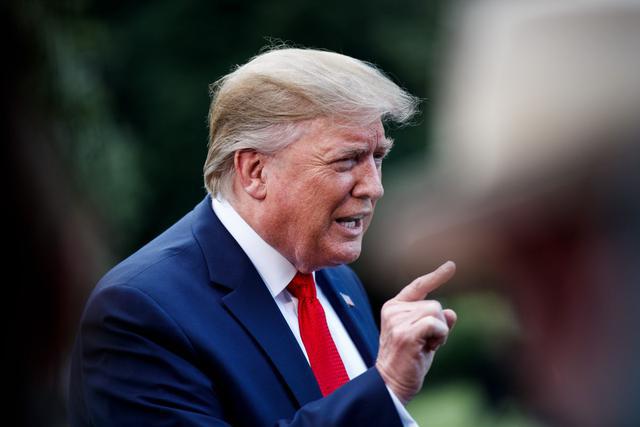Author: Prof. Engr. Zamir Ahmed Awan, Founding Chair GSRRA, Sinologist, Diplomat, Editor, Analyst, Advisor, Consultant, Researcher at Global South Economic and Trade Cooperation Research Center, and Non-Resident Fellow of CCG. (E-mail: awanzamir@yahoo.com).
In a series of unorthodox Christmas messages, President-elect Donald Trump laid bare his vision for America and its role on the global stage. His comments on Truth Social combined holiday cheer with bold and provocative proposals—from advocating the annexation of Canada and Greenland to reclaiming control of the Panama Canal. As Trump prepares to assume office on January 20, 2025, his remarks provide a window into his potential domestic and international policies and the geopolitical shifts that could follow.
America First, with a Twist
Trump’s Christmas posts underscored his commitment to an expanded interpretation of his “America First” doctrine. By suggesting annexations and heightened control over strategic assets like the Panama Canal, he is signaling a return to a more assertive and transactional approach to foreign policy. His references to the Panama Canal’s history, fees, and potential vulnerability highlight his focus on safeguarding American economic and security interests. Meanwhile, his overtures to Canada and Greenland suggest a mix of economic pragmatism and strategic calculation, reflecting their significance in terms of resources, geography, and defense.
A Dramatic Policy Shift
Domestically, Trump’s rhetoric hints at sweeping tax reforms and economic policies aimed at reducing financial burdens on American and, hypothetically, Canadian citizens. He claims that merging Canada into the United States would result in significant tax cuts and business growth, reinforcing his reputation as a dealmaker seeking to redefine national borders for perceived economic benefits.
Internationally, his statements about Greenland underscore its importance to U.S. national security and resource access. Trump’s appointment of Ken Howery as ambassador to Denmark underscores his strategic focus on the Arctic. Meanwhile, his criticism of Panama for “ripping off” the U.S. suggests an aggressive stance towards renegotiating or reasserting American influence in critical infrastructure projects.
Global Geopolitical Impacts
Trump’s policies are likely to send ripples through international relations:
Canada: By addressing Canadian taxes and governance, Trump positions himself as a reformer-in-chief, albeit one whose approach is likely to strain U.S.-Canada relations. Prime Minister Justin Trudeau’s dismissal of these ideas as jokes belies the serious implications of Trump’s rhetoric on trade, security, and political ties.
Greenland and Denmark: Denmark’s Arctic defense investments indicate a robust response to Trump’s proposals. Greenland’s Prime Minister Múte Egede’s firm rejection of U.S. interest highlights the resistance Trump’s policies could face in regions wary of perceived American overreach.
Panama: The President-elect’s concerns about the Panama Canal falling into “wrong hands” suggest a push to revisit agreements governing its operations. Panama’s assertion of sovereignty sets the stage for potential diplomatic confrontations.
China: Trump’s veiled criticism of Chinese activities in the Panama Canal area reflects a broader effort to counter Beijing’s influence. His stance could lead to heightened tensions between the world’s two largest economies. As Trump has historically framed U.S.-China relations in terms of economic competition and strategic rivalry, this trajectory is likely to continue under his administration. Issues such as trade imbalances, intellectual property rights, and technology theft may remain contentious points. Additionally, Trump’s renewed focus on infrastructure projects like the Panama Canal could place him at odds with China’s Belt and Road Initiative, escalating competition for influence in Latin America and beyond. Militarily, any efforts to challenge Chinese control in the South China Sea or its growing presence in the Western Hemisphere could result in heightened regional tensions. The administration’s policies may also amplify U.S. alliances in the Indo-Pacific region to counterbalance Beijing’s growing influence, potentially leading to strategic partnerships with nations such as Japan, India, and Australia. However, the economic interdependence of the two nations could act as a mitigating factor, encouraging dialogue despite underlying conflicts.
Russia: While not directly mentioned, Trump’s focus on Arctic assets and security aligns with concerns about Russian activity in the region. His policies could lead to increased competition or collaboration, depending on strategic priorities.
Israel and the Middle East: Given Trump’s past policies favoring Israel, his administration is likely to double down on support for the country. His approach to Middle Eastern geopolitics may further polarize the region, with potential impacts on relations with Iran and Gulf states.
The Team and Its Signal
Trump’s nominations for key positions, including Howery for Denmark and Kevin Marino Cabrera for Panama, underline his emphasis on loyalty and alignment with his vision. His choices suggest a focus on individuals capable of advancing his agenda through unconventional diplomacy and transactional negotiations.
A Pragmatic Yet Polarizing Vision
Trump’s Christmas messages were not merely festive greetings but strategic statements reflecting his worldview. His approach combines populist rhetoric with audacious goals that challenge traditional norms of diplomacy and governance. As he takes office, the world braces for potential upheaval—from North American relations to Arctic strategies and beyond.
Domestically, Trump’s policies promise dramatic tax reforms and economic incentives. Internationally, his America-centric agenda aims to reassert U.S. dominance, though it risks alienating allies and provoking rivals. The stakes are high, and the impact of his administration’s policies will be felt far beyond the United States.
Trump’s vision may polarize opinions, but it undeniably reflects his ambition to reshape America and its role on the global stage. As the clock ticks towards January 20, 2025, one thing is certain: the world is watching, and history is being made.
(ASIA PACIFIC DAILY)
